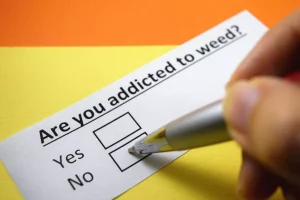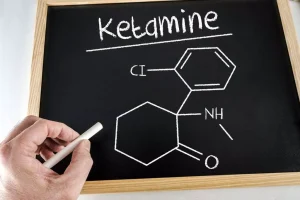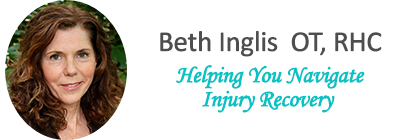
She may need to drink more coffee to get the same effect, abandon responsibilities or relationships because of it, or spend lots of time trying to quit caffeine. Das compared the difference between dependence and addiction to people’s relationship with caffeine. There may also be genetic or biological factors making people extraordinarily sensitive, which can’t be predicted, Witt-Doerring said. But most people can come off antidepressants without trouble if it’s done right, he added. “Multiple people have taken their life because the symptoms from this can be so extreme it can drive people to suicide,” Witt-Doerring said. “That’s a totally different mechanism from how antidepressants work, which are not driven by dopamine at all,” Humphreys said.

Barbiturates or Benzodiazepines (Downers)
They may experience withdrawal symptoms or feel unable to stop taking the drug. Public health strategies play a vital role in addressing substance abuse on a community level. Systems that focus on prevention, education, and accessible treatment Alcoholics Anonymous options can significantly reduce the rates of addiction within your community. Through comprehensive approaches, they aim to mitigate the societal impacts of addiction and foster healthier, more informed communities. Your journey toward overcoming substance addiction begins with understanding the available prevention and treatment options. These strategies are important for reducing the risk of substance abuse and helping individuals reclaim their lives.
- This illicit opioid is the most addictive drug in the world due to the way this substance alters brain chemicals and triggers addiction both physically and psychologically.
- Drug addiction can have serious health effects and cause disability and even premature death.
- They interfere with chemical signalling in the brain, the effect of which is to shut down various brain regions.
Why Is Meth So Addictive?
Misuse of amphetamines outside their medical purpose poses significant addiction risks and adverse side effects. It is highly addictive, creating a dependence on the dopamine and norepinephrine it produces, which, over time, diminishes the brain’s natural ability to generate these chemicals. In the United States, prescription medication controlled substances are strictly regulated under state and federal laws for their manufacturing and distribution. Examples of controlled prescription medications include morphine (severe pain reliever) and methylphenidate (stimulant). Because of its acceptance in society, alcohol is often seen as less harmful than other drugs, leading to a higher risk of misuse.
Public Health Strategies
When opioids enter your brain, they attach to receptors, which release signals https://ecosoberhouse.com/article/what-is-the-most-addictive-drug/ to block your perception of pain and increase feelings of pleasure. This “high” is what leads people to misuse these drugs, often spiraling into addiction. Drugs that cause an immediate and intense surge of dopamine in the brain tend to be more addictive. When a substance causes a rapid increase in dopamine levels, the brain becomes conditioned to seek out that high repeatedly. The faster a substance affects the brain, the more likely it is to cause dependency.

This relationship is central to determining a drug’s potency (the dose needed for effect) and efficacy (the maximum effect achievable). Understanding the dose-response relationship is crucial in treatment planning to ensure the dose is high enough to be effective but low enough to avoid adverse effects, balancing therapeutic benefits with safety. Physical and psychological dependence on the substance develops, making it difficult to function without it. Addiction to any of these or any other substances is a dangerous problem that must be treated as soon as possible. We can help set you up with a rehab center near you that will help you beat addiction and regain a sober and healthy life.
It can also evoke psychosis and aggressive or violent behavior at higher dose levels. It causes the brain to become reliant on the increased dopamine and norepinephrine that it creates. Over time, this also makes the brain less able to produce these chemicals on its own.

It’s all too common for patients to decide they no longer want to take medication, then do so without talking to their doctors. Some of those experiencing such symptoms mobilized, leading the United Kingdom’s National Health Service to add “protracted withdrawal” to its database of official medical terms in 2023. As a result, doctors can make a record of patients experiencing it and better collect information on symptoms and treatment. The NHS also founded a deprescribing clinic to help patients quit antidepressants safely.

Effects On The Brain
”, it’s important to first understand the nuances of drug addiction itself. Opioid use disorder is a complex, treatable chronic medical condition from which people can recover. Death from withdrawal, such as from related seizures or heart failure, is also possible, especially when someone has abruptly stopped taking the drug. Why antidepressants aren’t the same as addictive drugs begins with the neurochemical nature and functions of each, experts said.

Find Support for Substance Use Disorders
Another category of Schedule II drug, prescription opioids were thought not to be addictive when doctors began prescribing them for pain more often in the 1990s. As a fast-acting drug with several pleasurable effects, heroin is highly addictive. People may use it often to maintain the high and require higher doses to achieve the same effects. It is also a Schedule I drug, the class of drugs with the most potential for abuse and no current medical uses. Over time, the reward circuit becomes tolerant of the drug, requiring higher doses to achieve the same effects and diminishing the ability to feel pleasure from anything other than the use of the drug. Addictive drugs quickly produce a high and create changes in the brain that can lead to drug-seeking behavior.
